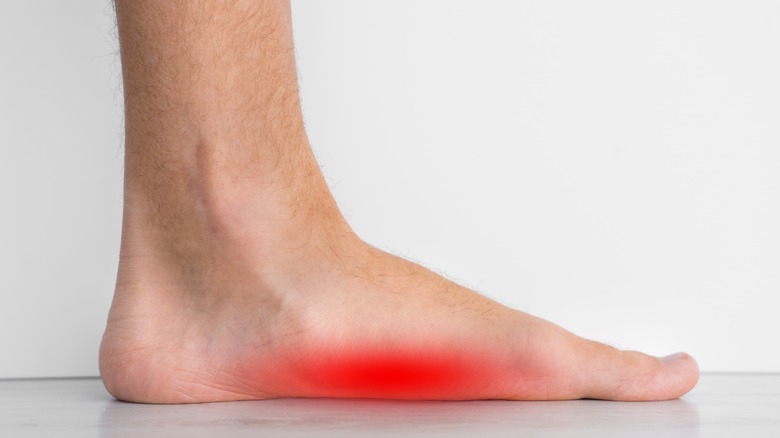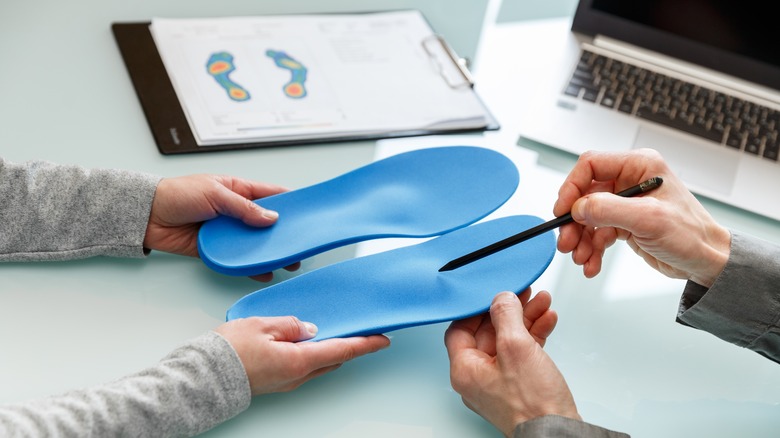Treatment Options If You Have Flat Feet
Flat feet occur when the arches of your feet touch the floor as you're standing, according to the Cleveland Clinic. About two out of every ten adults have flat feet and sometimes even experience fallen arches. Keep in mind, there are different types of flat feet, and typically, you don't need to worry about them if they aren't causing you any problems.
That said, flat feet can bring about many issues for some people. For example, some types of flat feet can cause leg cramps and throbbing in the legs or feet. They can also lead to secondary problems, such as bunions, corns, calluses, and shin splints. In addition, flat feet may increase the risk of developing arthritis, and pain in the lower back, hips, or knees. Unfortunately, the discomfort doesn't stop there. Some may experience tenderness in the arches or different areas of the feet, like the ankles or heels, per the National Health Service (NHS).
There are several ways to treat flat feet
The good news is that if or when you experience complications from flat feet, you'll have several treatment options. Arch supports, for one, are a popular way to deal with painful flat feet (via Mayo Clinic). You can buy orthotic supports over the counter, or you can schedule an appointment with a podiatrist who can have a pair designed especially for your feet. Over-the-counter nonsteroidial anti-inflammatory drugs could also help with the pain.
Now in case you have flat feet along with a short Achilles tendon, then you may benefit from stretching the tendon. Sometimes, physical therapy might be in order if you suffer from an injury due to running or other repetitive exercises. While flat feet don't generally need surgery, it can be considered as a last resort if no other treatments offer relief. Nonetheless, it's always best to speak with your doctor if you experience problems walking, balancing, or have stiff feet (per the Cleveland Clinic). The NHS also recommends reaching out to your physician if only one of your feet is flat.


